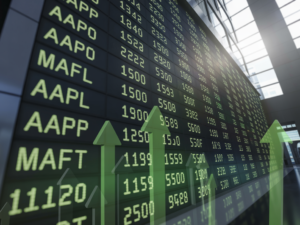In Monday’s early Asian session, the AUD/USD is trading on a softer note above the 0.6700 level.
The Australian Dollar is currently trading near 0.6710, and a break above 0.6750 will likely lead to a challenge of the 0.6800 psychological level. The 0.6700 level might act as a support, and a break below it could trigger a move down to the psychological support at 0.6650. A break below this level could then […]
The Australian Dollar is currently trading near 0.6710, and a break above 0.6750 will likely lead to a challenge of the 0.6800 psychological level.
The 0.6700 level might act as a support, and a break below it could trigger a move down to the psychological support at 0.6650. A break below this level could then lead to a move towards the 38.2% retracement level at 0.6637.
The Australian Dollar is trading sideways at around 0.6700 on Friday. The pair is under pressure as the US Dollar is not moving in a clear direction. The Caixin Services PMI showed an improvement in December.
The Australian Dollar is under pressure due to the weakening market sentiment and the fall in commodity prices. The latest data from the Japan Bank for International Cooperation’s PMI showed that the manufacturing and services sectors contracted.
The services PMI showed a contraction in December, which was the biggest since the third quarter 2021. According to Matthew De Pasquale of Judo Bank, the Australian economy is slowing down. The DXY, which is a measure of the US Dollar’s movement, is also exhibiting a slight increase in potential gains.
The recent gains in US Treasury yields may put some pressure on the greenback. On the other hand, upbeat employment data released on Thursday could boost the US Dollar. The ADP employment change report showed that the number of people who were employed in December increased by 164K.
The number of people filing claims for unemployment benefits decreased to 202K for the week ended December 29, which was above the expected figure of 216K. The S&P Global Composite PMI showed a small decline in business activity in December. It came in at 50.9, which was within the range of a steady 51.0 and below the market consensus of a contraction.




